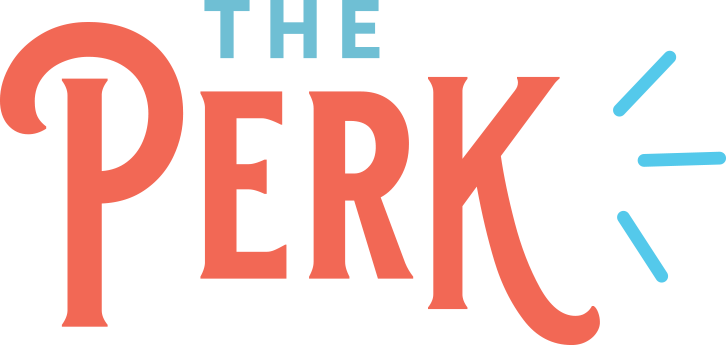Bridging Generational Gaps with DISC: Tailoring Communication for a Diverse Workforce
Navigating generational differences in the workplace is an ongoing challenge, but with the power structure changing dramatically, it has never been more important. Jason Busch of InBusiness Magazine recently highlighted that as Generation Z (Gen Z) begins to outnumber Baby Boomers & take on significant roles in the workforce, leaders must find effective ways to manage a multi-generational team.
Understanding & utilizing the DISC behavioral model can help leaders adapt their communication styles to meet the diverse needs of their teams, regardless of generational differences.
The Generational Shift
Baby Boomers dominated the workforce for a long time. However, around 2020, Millennials surpassed them in numbers. As more Boomers retire, Gen Z is expected to outnumber Boomers in the workforce soon. Gen Z, or Zoomers, are no longer just "kids" but are becoming a vital part of the workforce, bringing with them a strong desire for community connections, transparency, responsive leadership, & diversity & inclusion.
Each generation brings unique experiences and expectations:
Boomers: Value job security, a strong work ethic, & direct communication.
Gen X: Prefer independence, straightforward work-life balance, & hands-off management.
Millennials: Seek work-life balance, thrive under transparent & collaborative leadership, & are mission-driven.
Gen Z: Value digital fluency, social responsibility, personal development, & flexible, feedback-rich environments.
Given these varied preferences, leaders must avoid generalizations & recognize the individual strengths & values of each team member. Enter the DISC model. 🎉
2. What is DISC?
DISC is a universal language that describes how people approach problems, interact with others, manage pace, & follow procedures. It helps in understanding both individuals’ natural behaviors & the ways they adapt in the workplace, which are crucial for effective communication & leadership. The DISC model categorizes behavior into four primary styles:
Dominance (D) : Results-Oriented, Driven, Competitive
Influence (I) : Persuasive, Inspiring, Enthusiastic
Steadiness (S) : Amiable, Democratic, Patient
Compliance (C) : Analytical, Detail-Oriented, Systematic
3. Leveraging DISC to Manage Generational Differences
Understanding the DISC profiles of your team members can help you adapt your communication style to meet their needs, regardless of their generational background.
Dominance (D)
Characteristics: Active, forceful, direct
Values: Challenge, achievement
Dislikes: Wasting time, indecision
Communication Tips:
Do: Be clear, specific, & to the point. Stick to business & the facts.
Don’t: Tell stories or share unwanted details. Appear disorganized.
Generational Adaptation: Boomers & Gen X with high Dominance appreciate directness & efficiency, while Millennials & Gen Z with high Dominance value clear, brief conversations focused on results. Learn tips for setting clear expectations here.
Influence (I)
Characteristics: Talkative, emotional, impulsive
Values: Affiliations, optimism
Dislikes: Negativity, being left out
Communication Tips:
Do: Provide a warm environment, put details in writing, & follow up.
Don’t: Be curt or control the conversation too tightly.
Generational Adaptation: Millennials & Gen Z with high Influence thrive in engaging, positive environments that foster creativity & collaboration. Boomers & Gen X might need more structured follow-ups to stay engaged. Check out our Cross-Collaboration Guide here.
Steadiness (S)
Characteristics: Agreeable, cooperative, friendly
Values: Relationships, security
Dislikes: Conflict, change
Communication Tips:
Do: Show sincere interest, present your case softly, ask “how” questions.
Don’t: Be domineering or demanding.
Generational Adaptation: Gen X & Boomers with high Steadiness value stability & clear expectations. Millennials & Gen Z appreciate a supportive environment that allows for steady growth & minimal conflict. Tips for creating your own leadership development program here.
Compliance (C)
Characteristics: Detail-oriented, careful, thorough
Values: Credibility, accuracy
Dislikes: Low standards, non-compliance
Communication Tips:
Do: Be accurate & objective, follow rules & regulations.
Don’t: Push too hard or exaggerate.
Generational Adaptation: Boomers & Gen X with high Compliance appreciate thoroughness & adherence to standards. Millennials & Gen Z value precision & detailed feedback that aligns with their pursuit of personal development & excellence. Define your leadership purpose here.
4. Applying DISC Insights Across Generations
To effectively manage a multi-generational workforce, leaders can use DISC to tailor their approach:
Understand Individual Profiles: Know your team’s DISC profiles to better understand their communication preferences & stress triggers.
Adapt Communication: Use DISC insights to adapt your communication style to each individual's needs, whether they value directness, positivity, stability, or precision.
Foster Inclusion: Create an inclusive environment that respects & leverages the strengths of each generation, recognizing their unique contributions & perspectives.
Sign-up for our monthly Hey Leader Newsletter & never miss a game-changing tip from us!
SIGN UP5. Bridging the Generational Gap
Leaders must recognize the diverse perspectives & strengths each generation brings to the team. For instance, while Boomers bring experience & a strong work ethic, Gen Z offers fresh perspectives on digital fluency & social responsibility. DISC provides a framework for understanding these differences & adapting your communication to engage & motivate all employees effectively.
By embracing the DISC model, leaders can bring generations within their team together & foster a workplace culture that values diversity, promotes inclusion, & drives collective success. This approach not only enhances communication but also helps in creating a more empathetic, inclusive, & productive work environment to retain & engage the team’s top talent.
Remember, the goal is to meet people where they are, understanding their individual & generational needs, & adapting your leadership style to bring out the best in each team member.
Interested in more ways to engage & bring your multigenerational workforce together?
Connect with us to learn more about our interactive team building & communication workshops.
Pssst...I LOVE connecting with & growing my community! Feel free to connect with me on LinkedIn - see you there! 🤗



